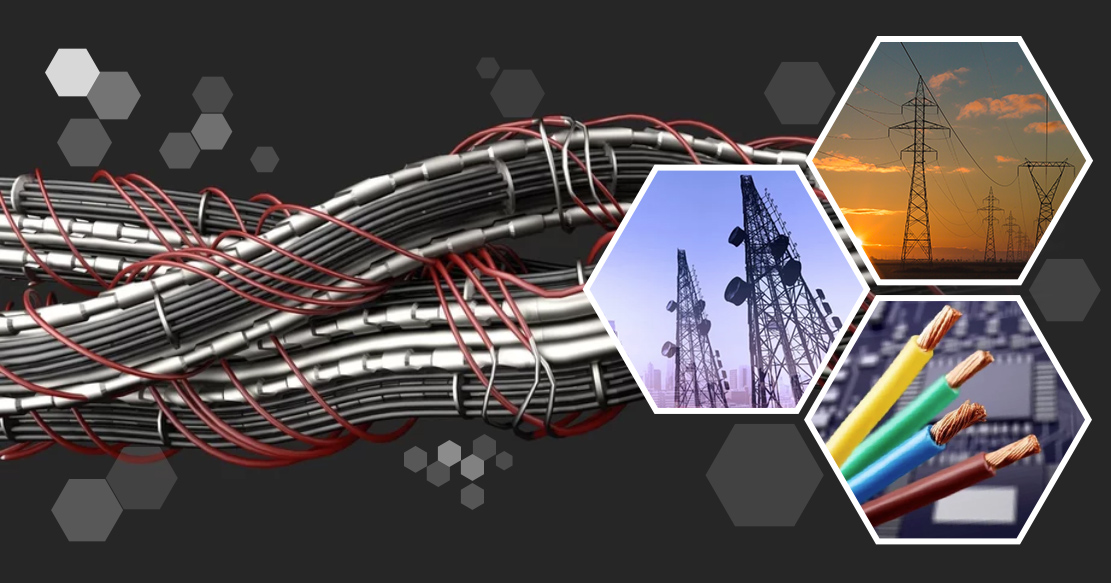
Aluminium as an important alternative to Copper in Electrical wires and Cables
Copper, an electrical conductor in wires and cables, started in the 1820s, with the invention of the telephone and the telegraph.
In use for power generation, power transmission & distribution, telecommunication, and electronics circuity, the metal has seen the highest demand in the last 50 years. And the biggest market for copper is electrical wiring, consuming approximately half of the copper mine.
The vast consumption of copper and lack of metal supply increase the prices of commodities and push manufacturers to look for other alternatives, such as Aluminium for electrical wire and cables.
Aluminium is a versatile metal with its exceptional design flexibility and high conductivity. In addition, the lightweight and non-corrosive property of the metal makes it one of the best alternatives to copper in the power sector.
The wire and cable industry is gradually moving to aluminium and aluminium alloys as wire conductors and cables for their application in long-distance power transmission lines, high and medium voltage overhead wiring, underground power cables, domestic consumption, etc.
Copper vs Aluminium as a metal
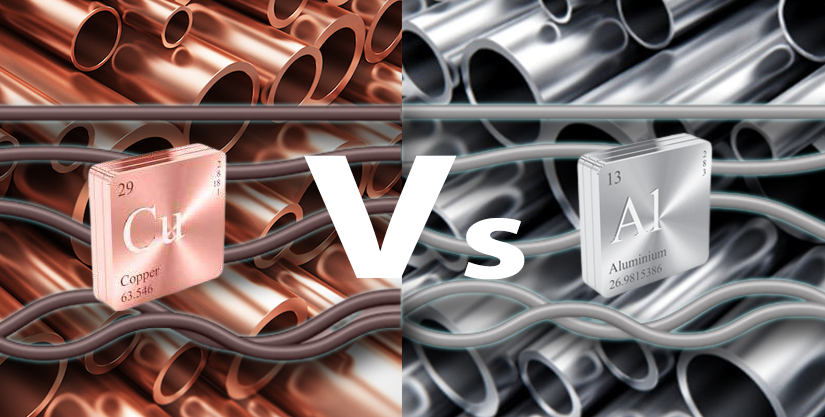
Copper is one the oldest known metal used in experiments with electricity and inventions like the telegraph, electric motor, and the telephone.
Due to one of the most conducive metals, it has become the international standard.
The tensile strength of copper is almost 40 percent that of aluminium, making it less likely to break and bear the stress of wear and tear over time.
The metal doesn’t expand much when exposed to heat because of a lower thermal expansion. High-ductility allows it to shape into fine wires adding to the versatility of the copper wires.
According to International Annealed Copper Standard, commercially pure copper annealed copper has a conductivity of 100 percent, making it a superior conductor.
Aluminium is also one of the common materials used in electrical wires and cables. The conductivity of aluminium is 61 percent of copper metal but weighs only 30 percent of copper. Thus, making a bare aluminium wire weighs just half of a bare copper wire having the same electrical resistance.
The electrical resistivity of aluminium is 1.6 times higher than copper, makes it relevant for power cables.
Like Copper, aluminium forms an oxide layer when exposed to the atmosphere and prevents corrosion.
With a melting point of 655 degrees Celsius, the metal can get easily drawn into thin wires.
Pros, Cons, and Evolution of Aluminium in Wires and Cables
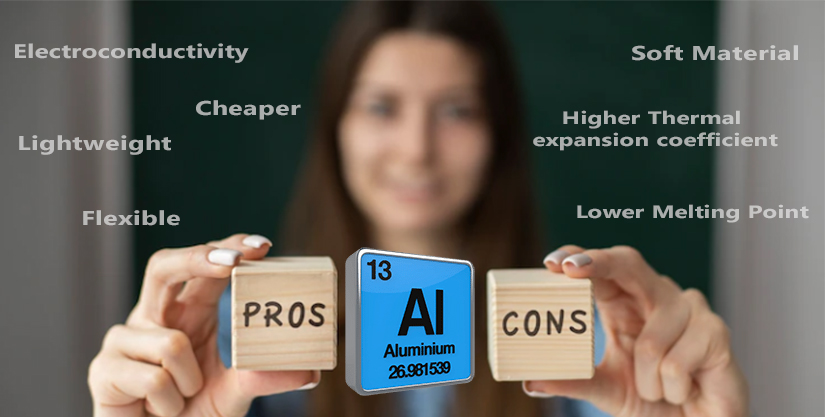
The ever-increasing demand for electrical products has increased the demand for copper. Gradually leading increase in the cost of copper as a commodity and a lack in supply. Therefore, original equipment manufacturers are looking for other alternatives like Aluminium.
Some pros and cons of using Aluminium in wires and cables are listed below.
Advantages of using Aluminium in Wires and Cables




The disadvantage of Aluminium in Wires and Cables




Evolution of Aluminium Cables
Aluminium alloys can overcome the drawbacks and have creep and elongation properties similar to copper.
When alloyed with other materials like magnesium, silicon, or iron, aluminium acquires higher mechanical strength and gets used for overhead transmission lines.
Aluminium cables are continuously evolving, such as All Aluminium Conductors (AAC), All Aluminium Alloy Conductors (AAAC), Aluminium conductors steel reinforced (ACSR), and flexible conductors.
The major areas of its application are overhead transmission lines, cables, foil windings, cast squirrel cage motors for three-phase induction motors, low and medium voltage underground cables, etc. Also, for large coaxial cables, the usage of copper-clad aluminium wire is advantageous by giving conductivity to copper while gaining the weight savings of aluminium.
Aluminium rising as an alternative in Underground Power Cables
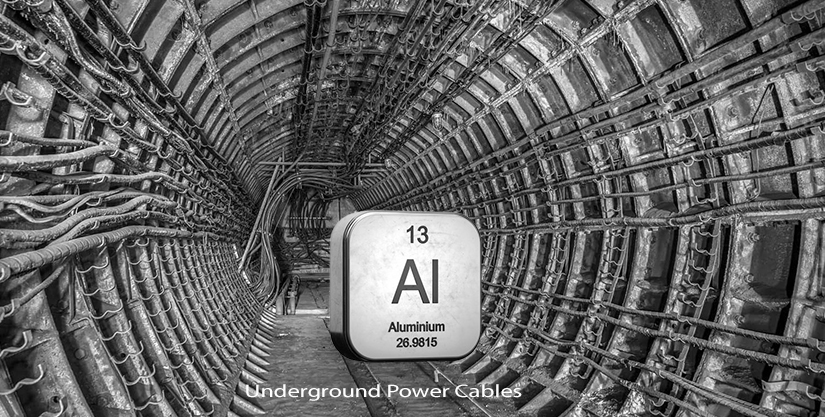
For selecting the conductor of underground power cables, it is essential to consider several factors like electrical considerations, thermal design, installation techniques, mechanical stress, cost, environmental impact, and others.
Electrical resistance
The metals used for underground power cables because of superior conductivity are copper and aluminium. Even though copper has more electrical conductivity than aluminium, but almost three times heavier and much expensive than aluminium.
Economical design of cable conductors
An underground cable generally operates in the condition of acceptable losses, and power losses dominates the cables environmental impact.
While designing a cable system, it needs to get ensured that system stays with the current rating dictated by the thermal behaviour and cable should not exceed the maximum temperature of the insulating layer in operational mode.
Based on this approach, a cable with a large aluminium conductor, although more expensive initially, may generate lower losses than the thermally designed conductor. Some manufactures are now offering aluminium conductors of 3000 or 4000 mm², as they generate lesser energy losses than small copper conductors.
Therefore, a large aluminium conductors can lead to benefits, like less risk of thermal aging, reduced risk of thermal runways, margins for overloads, a large safety margin to handle load perks, etc.
Aluminium as future of the Electrical Sector
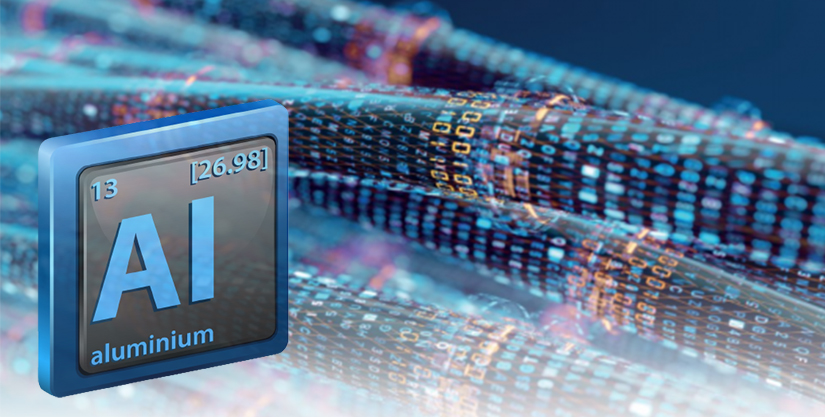
Presently, India is the largest consumer of aluminium-based wires and cables, with a per capita consumption of 0.9 kgs in the electrical sector. The average world consumption of the metal is 1.3 kgs per capita in the electrical sector.
High structural strength, light weight, good conductivity, high-ductility and non-magnetic properties of aluminium and its alloys the future of the electrical and power sector.
CONTACT US